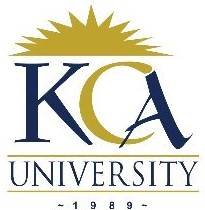
UNIVERSITY EXAMINATIONS: 2018/2019
EXAMINATION FOR THE DEGREE OF BACHELOR OF BUSINESS IN
INFORMATION TECHNOLOGY
BBIT 209 DECISION SUPPORT SYSTEMS
FULL TIME/PART TIME/DISTANCE LEARNING
DATE: DECEMBER, 2018 TIME: 2 HOURS
INSTRUCTIONS: Answer Question One & ANY OTHER TWO questions.
QUESTION ONE
a) Simon’s Model of the decision making process has several fundamental stages. List these with a
brief summary of each stage. Which is, in your opinion, the most important stage?
(4 Marks)
b) Distinguish between data-directed and goal-directed analysis in rule-based systems. Which is preferred
for medical diagnostic systems and why? (4 Marks)
c) Using relevant examples differentiate between the following decision theories: descriptive,
prescriptive and normative (6 Marks)
d) We have been asked to create a wine recommender for a restaurant, following these rules. If the
customer is a connoisseur and orders a meat meal (veal, steak or spam) then we recommend the
“Bordeaux”. If customer is a connoisseur and orders a fish meal (salmon, sole or sardines) then we
recommend the “Sauvignon Blanc”. If the customer well informed and orders a meat meal, then
we recommend the “Merlot”. If the customer is well informed and orders a fish meal, we
recommend the “Chardonnay”, and for all other cases we recommend the “House Special. Create a
decision table using the information above (6 Marks)
e) Describe two examples of intelligent algorithms that can be used in DSS (4 Marks)
f) Describe the advantages and disadvantages of end user developed DSS (4 Marks)
g) Identify the components of a Decision Support Systems (2 Marks)
QUESTION TWO
a) A small grocery store, provides customers’ need and concerned with the financial- viability of the
store. Bread is one of their major daily products. Their problem is to determine how much bread to
stock each day. They decide to explore a few possible approaches to solve the problem
i) Describe possible approaches to solve this problem (10 Marks)
ii) Design a modeling solution using any technique you have learnt in class to help them solve the
problem (10 Marks)
QUESTION THREE
a) A Group Decision Support System (GDSS) is more likely to support the Intelligence phase of
Simon (1960)’s decision making model, whereas a rule-based Expert System (ES) is more likely to
support the Design and Choice phases. Discuss the extent to which you agree with this statement.
Include a definition of both GDSS and rule-based ES within your answer. (10 Marks)
b) How can sensitivity analysis help in the choice phase (6 Marks)
c) Discuss how can a computer help overcome the cognitive limits of human (4 Marks)
QUESTION FOUR
A furniture company is producing and selling several products for gross sales (income) of 2.25 million
shillings. Returns and allowances are 4 percent of gross sales, reducing the income to net sales. Marketing,
management, and general expenses (MM&G) are figured to be 18% of the net sales. Cost of goods sold is
the sum of labor (14% of sales), materials (23% of sales) and overhead. Overhead is figured to be variable
overhead (28% of the combined cost of labor and materials) plus fixed overhead (kshs 80,000).
Gross profit is the difference between net sales and cost of goods sold. To figure the profit before tax,
MM&G expenses need to be subtracted from the gross profit. Finally, there is the 27% VAT and 8%
withholding taxes that need to be considered, but these are only assessed if there is indeed a profit; if the
profit before tax is zero or below (a loss from operations), the tax is zero
a) Generate a table showing a 5% monthly increase in gross sales over a period of five months
(8 Marks)
b) What will be the profit after tax if gross sales decline to shs2.0 million? (4 Marks)
c) Assume that the VAT rate is 40% and gross sales total shs3,000,000, what would the change be in
net income? (4 Marks)
d) What is the change in net income resulting from a plan that would reduce the materials cost
fraction to 20% per year but would increase labor costs to 16%? (4 Marks)
QUESTION FIVE
a) Clothes Entreprise is a leading clothing with over 100 departmental stores in Kenya. The
departmental stores have to reconsider the best way to secure and maintain a competitive advantage.
With increasing competition, they are planning on using a sophisticated decision support system.
The existing system in the company handles large amounts of data, however, inadequate data access
and analysis capabilities prevented managers from exploiting the wealth of information buried in
their business transaction. Explain THREE (3) decision situations which can be supported by the
new decision support system. (6 Marks)
b) Define the relationship between business intelligence and DSS (4 Marks)
c) “Proper application of decision making tools increase productivity, efficiency and effectiveness
leading to competitive advantage. “Justify (10 Marks)